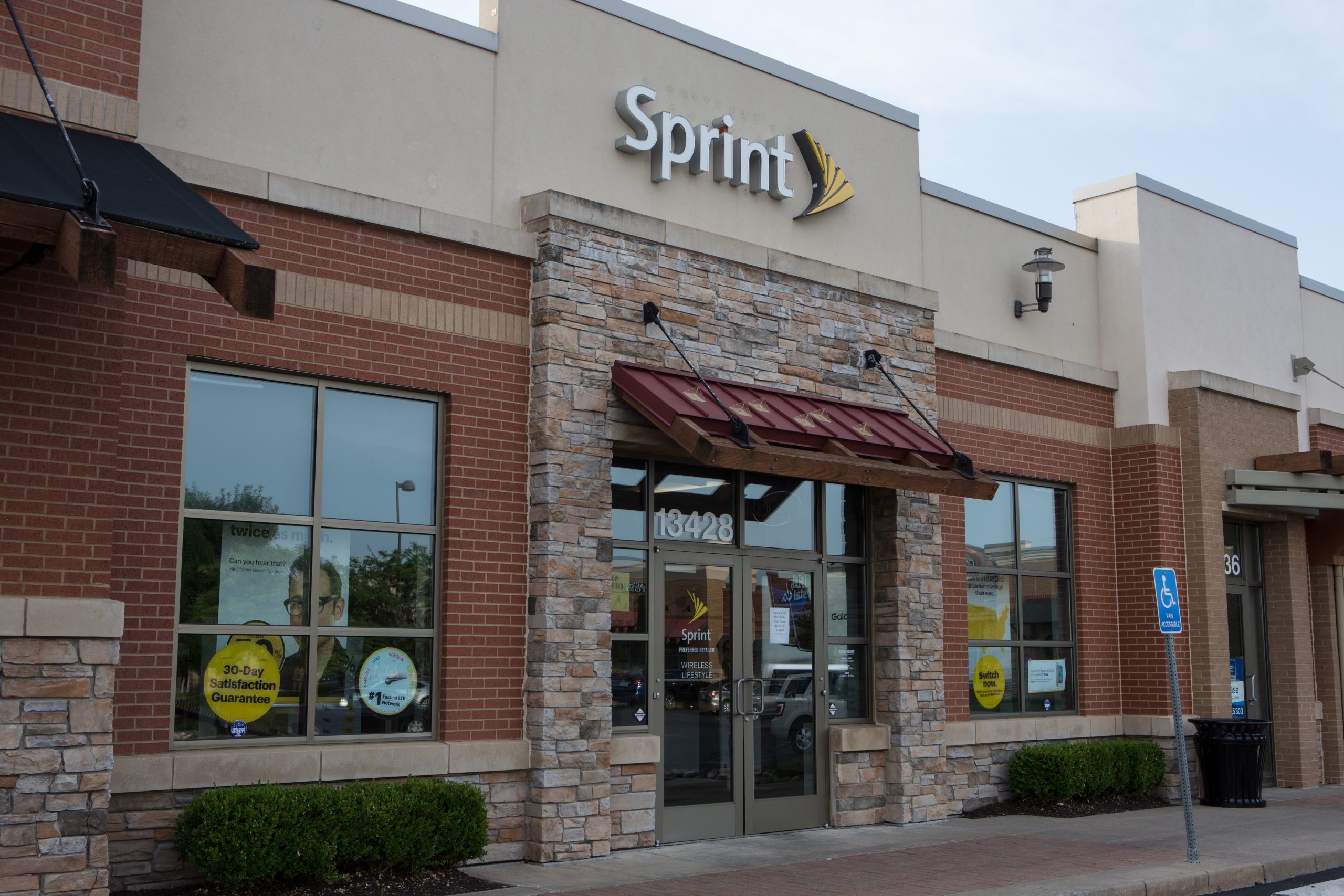Sprint is currently the smallest of the four major wireless carriers in the United States with 54 million subscribers. That places Sprint at roughly one-third the subscriber base of AT&T and Verizon who have a reported 159 million and 153 million respectively.
Rounding out the four major US wireless carriers is T-Mobile with a reported subscriber base of 83 million. These numbers could see a bit of a shift with the potential T-Mobile merger, but first, a bit about the Sprint network.
Does Sprint have 5G?
The original 1G networks included support for voice calls, and 2G brought messaging. While 2G was a nice step up from the original 1G (first generation) networks, many users saw the jump to 3G as a huge step forward. The 3G network meant having the web on your phone. Of course, with Sprint having cycled through 4G Wimax, which Sprint shut down in early 2016, to 4G LTE Advanced and now entering the beginning stages of their 5G rollout — 3G may seem much less exciting.
Unlike some other carriers, Sprint has not yet announced a date for the shutdown of their 3G network. Instead, they seem to have taken a slightly softer approach, and as of this time they have stopped activating 3G-only devices.
At present Sprint is pushing their 4G LTE Advanced network, which is touted as being 2x faster as compared to standard Sprint 4G. According to Sprint, their LTE Advanced network now has nationwide coverage and is available in over 500 cities.
The next step will bring the Sprint network to 5G, and it reportedly will be able to offer 10x faster speeds as compared to 4G. Sprint’s next-generation network is dubbed True Mobile 5G, and the carrier has said this will mean “true mobility in covered areas, robust connections, and incredible reliability.” That sounds good, but we suspect many users will focus on the 10x faster (compared to 4G) speeds.
Sprint’s True Mobile 5G network is currently available in select cities for those with a compatible device and compatible plan. 5G network availability currently includes the following cities:
- Atlanta
- Chicago
- Dallas-Fort Worth
- Houston
- Kansas City
- Los Angeles
- New York
- Phoenix
- Washington D.C.
Sprint merging with T-Mobile
The Sprint True Mobile 5G rollout may seem small, or as if it is off to a slow start, however, this rollout is expected to see a boost once Sprint and T-Mobile officially merge. Talks of a merger began several years earlier, and have been on-and-off since they began. As of early-November 2019, the merger has federal approval, but it still needs to receive approval from the California PUC and win the lawsuit from the State Attorney Generals, which as of August 2019 totaled 15 who were opposing.
The federal approval does have some conditions and this is where we may see some 5G push. The conditions include Sprint and T-Mobile being able to offer speeds of 100Mbps or greater to 90% of Americans and bring 5G coverage to 97% of Americans within 3 years. T-Mobile’s CEO John Legere has stated he believes the merger will be finalized in the early part of 2020. Assuming that the timeline holds accurate, that would mean nearly all Americans would have access to Sprint/T-Mobile 5G by early 2023.
Coming off of a favorable ruling in Federal Court in New York (from February 2020), T-Mobile and Sprint have announced they are now “taking final steps to complete their merger to create the New T-Mobile.”
Buying a Sprint phone
Sprint currently operates CDMA, EVDO, LTE, and 5G networks. The use of the CDMA (Code Division Multiple Access) network had, at times, caused some confusion when buying a used device with plans to use the phone with Sprint.
The CDMA network meant each device’s electronic serial number (ESN) had to be activated with Sprint. This differed from carriers using the GSM network which allows users to activate a new device by swapping the SIM card. Here in the United States, Verizon also uses a CDMA network. But AT&T and T-Mobile, as well as much of the world use a GSM (Global System for Mobile Communications) network.
In the simplest breakdown, mobile phones are either locked or unlocked. A locked phone means the phone is locked to, and available for use with the one carrier. For example, if the device is locked to Sprint, it would only be available for use with Sprint.
Carriers can unlock a device from their network which will allow the device to be used with other carriers. Carrier requirements can vary when it comes to unlocking with some of the more common requirements being the device is paid in full, and that it has been activated and used on the carrier for a set amount of time.
If a carrier unlocks a device it would then be considered a “carrier unlocked” device. This essentially means the device was once locked to a specific carrier and is now unlocked for use with other carriers. There is also a “factory unlocked” device, which just means the device is unlocked from the factory and has never been locked to a specific carrier. Factory unlocked devices typically offer the widest variety of network support.
If you are buying a used device for Sprint you’ll have two basic options to consider — a Sprint locked device or an unlocked device. If you plan to go the unlocked route, you will want to ensure the device you plan to purchase can be activated with Sprint.
It is also important to note that not all unlocked devices work with all carriers. You could double-check the network bands and frequencies of the model you are planning to purchase. Or, you can also confirm compatibility with a call to the carrier.
Sprint network bands, frequencies and why does it matter?
A network band is the number designated to a specific radio frequency. For example, Sprint uses Band 25, which makes use of the 1900 MHz frequency. Band 25 is just one of a few bands used by Sprint. Network band support is important when considering an unlocked device for Sprint. If the device does not support the necessary bands, the device would not be supported by the carrier.
AT&T, T-Mobile, and Verizon all use a number of different bands/frequencies, and many of these bands overlap between the three carriers, which improves device compatibility across these carriers. Sprint, on the other hand, makes use of just a few bands, and they differ from the bands used by other carriers. The Sprint network bands are noted below:
- CDMA2000
- LTE FDD Band 25 – 1900 MHz
- LTE FDD Band 26 – 850 MHz
- LTE TDD Band 41 – 2500 MHz
Our carrier networks page details the bands used by each carrier.
Sprint plans
Carriers will change wireless plans from time-to-time. However, at present, Sprint is pushing its unlimited plans which include Unlimited Basic, Unlimited Plus, and Unlimited Premium. The plans all include unlimited data, talk, and text along with various other perks.
The Basic plan includes Hulu and DVD (480p) quality video streaming, with the Plus plan adding Tidal and HD (1080p) quality video streaming. The Premium plan is touted as being “perfect” for 5G devices and adds on Amazon Prime and Full HD quality video streaming.
These plans are currently priced at $60 (Basic), $70 (Plus), and $80 (Premium) per month.
Which carriers use Sprint’s network?
Along with the main carrier services, Sprint may have the largest number of MVNO’s among the major carriers. They include Ting, TextNow, and others. These MVNO operators provide Sprint service using the CDMA, EVDO, and LTE networks. Along with traditional post-paid plans, MVNO carriers provide additional options to include usage-based and pre-paid.
In addition to the MVNO operators, Sprint also has a Prepaid Group (SPG). This group is responsible for pre-paid services sold through retailers such as Best Buy, Walmart and Target.
*****
This post has covered what you can currently expect from Sprint in terms of their network, and what you can look forward to seeing in terms of the future — 5G and a merger with T-Mobile. We’ve also covered a bit about what you need to know in terms of buying a used phone for Sprint and their current line of plans and service options. An unlocked phone can be considered for use with Sprint, but you can also head directly to our current selection of Sprint devices to help ensure network compatibility. If you’re a current Sprint subscriber in need of customer service or tech support, you can find Sprint’s contact info here.




